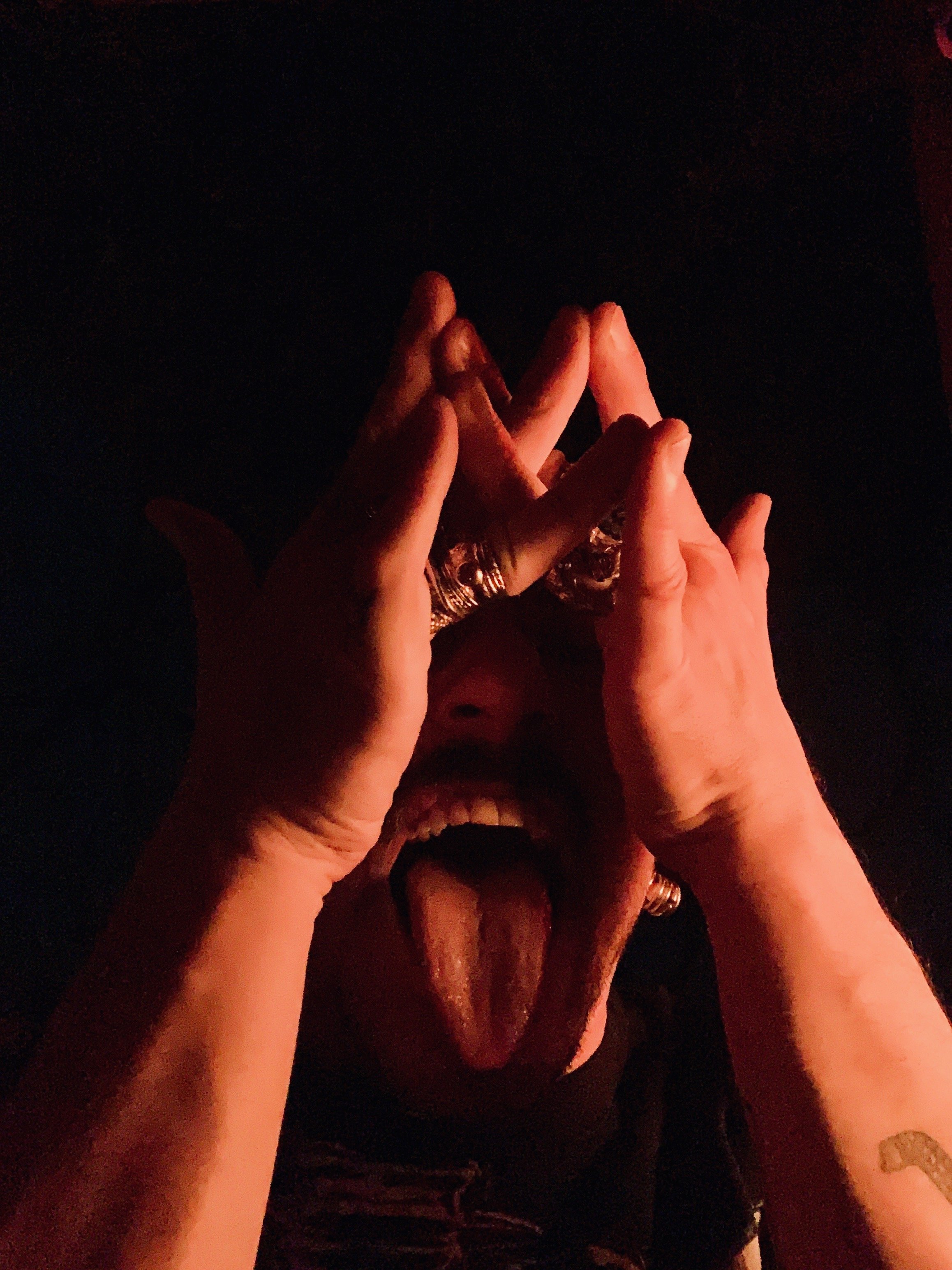witch yoga: a spell, a stretch, a study
by Alex D’Agostino
witch yoga: a spell, a stretch, a study
Witch and Yoga. Two powerful, ancient words. Both carry histories heavy with reverence, stigma, ritual, and reclamation. When placed side by side—Witch Yoga—they form a kind of spell in and of themselves. This is more than a buzzword blend or an aesthetic pairing. This is an intentional practice: an invitation to explore what happens when spiritual curiosity, disciplined embodiment, and mystical inquiry meet on the mat.
Witch Yoga begins not with a pose or a chant, but with a conversation. What does it mean to be a witch? What does it mean to practice yoga? These questions are far from simple. In fact, they’re entire lifetimes of study and experience. But before we move together through asana (physical posture), pranayama (breathwork), or automatic writing/drawing (a magical practice of divination and subconscious release), we pause to ask these questions.
For me, “witch” is not a costume or a Halloween trope. It is a queer and subversive archetype—a lineage I live and learn through. I fill my days with art, research, ritual, and yes, I do have a black cat, a cauldron, and shelves of spellbooks. Some are Wiccan, others are grimoires from Early Modern Europe or 19th-century occult circles. Many are about meditative and mystical aspects of magic, where spellcraft is not just a tool for results but a form of prayer or intention-setting. A rose by any other name, right?
To work magic—or to sit in stillness and attempt communion with something larger—requires a sanctified mind and body. That doesn’t mean purity or perfection. In fact, magic has always existed on the margins, in the hands of those deemed impure, dangerous, or disposable by dominant systems. Magic, like yoga, is an extension of our humanity. Our creative impulse. Our desire to connect, to transform, and to remember that we are not just of the world—we are shaping it.
Witch Yoga began for me as a way to understand how deeply yoga had transformed my magical practice. My breath, my body, and my spiritual inquiry were all being reshaped by my yoga journey—through tantric texts, vinyasa flows, and moments of wordless meditation. Yoga became not just a practice, but a living mythology—a home I could return to when magic felt too abstract or too volatile.
From there, I began to ask: What if we let these two lineages meet and inform each other?
There are endless portals to consciousness. Yoga is one. Magic is another. In the Yoga Sutras of Patanjali, we find a structured approach to the inner self: the eight limbs of yoga offer a path toward union—between body and mind, individual and cosmos. But the Vedas, including the Atharva Veda, include mantras and spells—for healing, love, protection, and even spells against witchcraft. That paradox isn’t lost on me. Ancient India had (and still has) complex relationships with sorcery and “black magic”—just as Europe did. Laws against maleficium (harmful magic) justified witch-hunts that destroyed countless lives, often those living at the edges of society.
But yoga is a practice that transforms. It transmutes the painful, the chaotic, and the egoic into something calm, clear, and connected. In yoga, we may find alternatives to the impulse to curse or hex, to lash out when wronged. And yet—what of collective resistance? Can a binding spell against a dictator be a form of non-violence? Can civil disobedience be a yogic act? The ethical limb of yoga, ahimsa (non-harming), might invite such questions—not to shut them down, but to examine them with clarity and intention.
Witch Yoga invites all of these contradictions in. We do not practice to escape complexity, but to dwell in it.
In Witch Yoga, we do not cosplay witches—we channel. Through movement, through breath, and through automatic drawing and writing, we explore what lies just beneath the surface: the archetypes, the ancestors, the stories we’ve inherited, the spells we’ve forgotten. The body becomes an altar. The mat becomes a crossroads. The practice becomes a ritual of reclamation.
I’m not here to define what it means to be a witch, or a yogi. Nor do I offer a neatly packaged fusion of “ancient secrets” and “customized bliss.” I’m wary of cherry-picking from esoteric traditions, and I urge anyone curious about Witch Yoga to study deeply and remain mindful of cultural context, lineage, and source.
If you feel overwhelmed by injustice, or desire change that feels impossible, Witch Yoga might be a container. A way to sit with your anger before casting it outward. A way to cultivate intuitive stillness before crafting a ritual of transformation. A way to embody magic before attempting to bend reality to your will.
So what is Witch Yoga?
Is it yoga for witches? Is it practical witchcraft woven into yogic philosophy? Is it a study in historical parallels—two non-religions, each persecuted, commodified, and reclaimed again and again? Yes, and more.
At its heart, Witch Yoga is a commitment to curiosity. A spell of stillness. A ritual of embodiment. A movement practice that opens portals to deeper wisdom—not to escape the world, but to participate in it more magically. Witchcraft is not always solemn, and yoga not always serene. Both can be messy, ecstatic, imperfect, and alive.
So bring your questions. Bring your contradictions. Bring your whole, sacred, flawed self. Light a candle. Roll out your mat. And breathe into the mystery.

